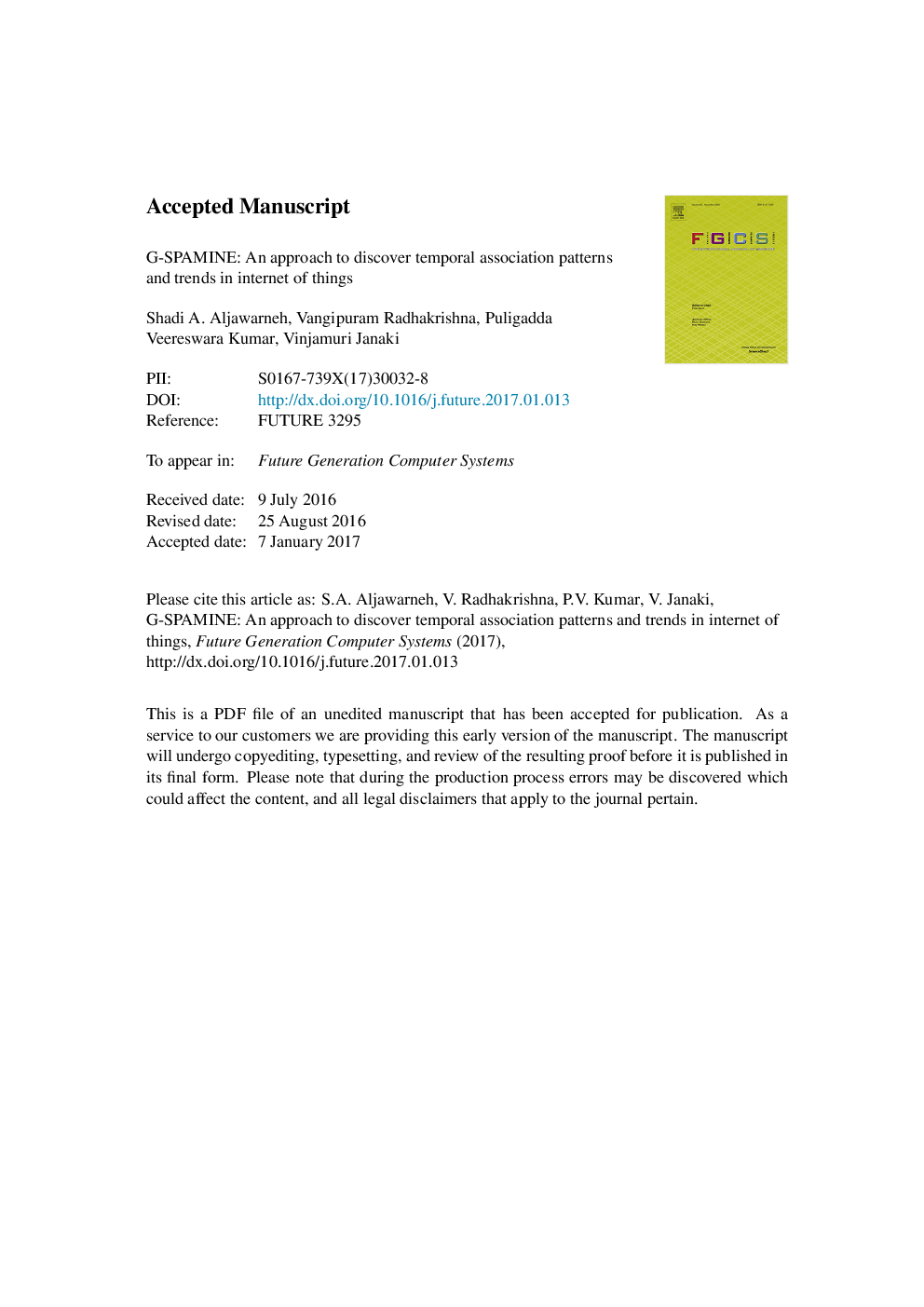| Article ID | Journal | Published Year | Pages | File Type |
|---|---|---|---|---|
| 4950392 | Future Generation Computer Systems | 2017 | 17 Pages |
Abstract
Temporal data is one of the most common form of data in internet of things. Data from various sources such as sensors, smart phones, smart homes and smart vehicles in near future shall be of temporal nature with generated information recorded at different timestamps. We call all such data as time stamped temporal data. Discovery of temporal patterns and temporal trends from such temporal data requires new algorithms and methodologies as most of the existing algorithms do not reveal emerging, seasonal and diminishing patterns. In this paper, the objective is to find temporal patterns whose true prevalence values vary similar to a reference support time sequence satisfying subset constraints through estimating temporal pattern support bounds and using a novel fuzzy dissimilarity measure. We name our approach as G-SPAMINE. Experiment results show that G-SPAMINE out performs naive and sequential approaches and comparatively better to or atleast same as SPAMINE. In addition, the stamped temporal data adds extra level of privacy for temporal patterns in the IoT.
Related Topics
Physical Sciences and Engineering
Computer Science
Computational Theory and Mathematics
Authors
Shadi A. Aljawarneh, Vangipuram Radhakrishna, Puligadda Veereswara Kumar, Vinjamuri Janaki,
